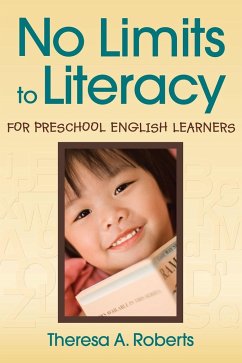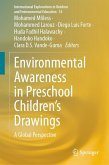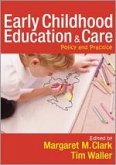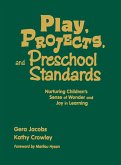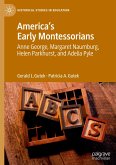Theresa A. Roberts
No Limits to Literacy for Preschool English Learners
Schade – dieser Artikel ist leider ausverkauft. Sobald wir wissen, ob und wann der Artikel wieder verfügbar ist, informieren wir Sie an dieser Stelle.
Theresa A. Roberts
No Limits to Literacy for Preschool English Learners
- Gebundenes Buch
- Merkliste
- Auf die Merkliste
- Bewerten Bewerten
- Teilen
- Produkt teilen
- Produkterinnerung
- Produkterinnerung
Combining theory with proven teaching strategies, this resource helps preschool educators produce strong language and literacy outcomes for English learners ages 3 to 5.
Andere Kunden interessierten sich auch für
![BJ's Adventures in the Neighborhood BJ's Adventures in the Neighborhood]() Tomiko CobbBJ's Adventures in the Neighborhood25,99 €
Tomiko CobbBJ's Adventures in the Neighborhood25,99 €![Environmental Awareness in Preschool Children's Drawings Environmental Awareness in Preschool Children's Drawings]() Environmental Awareness in Preschool Children's Drawings97,99 €
Environmental Awareness in Preschool Children's Drawings97,99 €![Early Childhood Education Early Childhood Education]() Cathy NutbrownEarly Childhood Education139,99 €
Cathy NutbrownEarly Childhood Education139,99 €![Early Childhood Education and Care Early Childhood Education and Care]() Margaret S. Clark (Sydnor) / Tim Waller (eds.)Early Childhood Education and Care200,99 €
Margaret S. Clark (Sydnor) / Tim Waller (eds.)Early Childhood Education and Care200,99 €![Play, Projects, and Preschool Standards Play, Projects, and Preschool Standards]() Gera JacobsPlay, Projects, and Preschool Standards86,99 €
Gera JacobsPlay, Projects, and Preschool Standards86,99 €![A New Vision for Early Childhood A New Vision for Early Childhood]() Noah HichenbergA New Vision for Early Childhood200,99 €
Noah HichenbergA New Vision for Early Childhood200,99 €![America's Early Montessorians America's Early Montessorians]() Gerald L. GutekAmerica's Early Montessorians104,99 €
Gerald L. GutekAmerica's Early Montessorians104,99 €-
Combining theory with proven teaching strategies, this resource helps preschool educators produce strong language and literacy outcomes for English learners ages 3 to 5.
Produktdetails
- Produktdetails
- Verlag: Corwin
- Seitenzahl: 266
- Erscheinungstermin: 12. Januar 2009
- Englisch
- Abmessung: 260mm x 183mm x 19mm
- Gewicht: 701g
- ISBN-13: 9781412965637
- ISBN-10: 1412965632
- Artikelnr.: 25327648
- Herstellerkennzeichnung
- Libri GmbH
- Europaallee 1
- 36244 Bad Hersfeld
- gpsr@libri.de
- Verlag: Corwin
- Seitenzahl: 266
- Erscheinungstermin: 12. Januar 2009
- Englisch
- Abmessung: 260mm x 183mm x 19mm
- Gewicht: 701g
- ISBN-13: 9781412965637
- ISBN-10: 1412965632
- Artikelnr.: 25327648
- Herstellerkennzeichnung
- Libri GmbH
- Europaallee 1
- 36244 Bad Hersfeld
- gpsr@libri.de
Theresa Roberts is currently a professor of child development at California State University, Sacramento. She has published studies on early literacy development with a focus on children who are learning English as a second language in journals such as Reading Research Quarterly, Journal of Educational Psychology, and Contemporary Educational Psychology. Her research interests include alphabet and vocabulary learning, classroom instruction experiments, and family engagement. She has collaborated with preschool and elementary teachers to develop instruction programs and teacher training on these topics. She was a member of the panel of experts that developed the State of California Prekindergarten Guidelines. She also serves as a research consultant for the California Preschool Instructional Network (CPIN) and is a consultant on an Early Reading First grant. She is an elected voting member of the Society for the Scientific Study of Reading, a reviewer for the Journal of Educational Psychology and Applied Linguistics, and sits on the editorial board of Reading Psychology. She earned her doctorate from the University of California, Los Angeles.
Acknowledgments About the Author Introduction 1. Resources English Language Learners Bring to Literacy Learning The Language and Literacy Wellspring The Emotional Wellspring The Motivational Wellspring The Family Wellspring The Cultural Wellspring Conclusion 2. Building On and Scaffolding With Primary Language Why Support Children
s Primary Language? Primary Language and Literacy Achievement Adding Some Magic: Metacognitive Benefits Beyond the Words: Social-Emotional Aspects of Primary Language What Happens to the Primary Language When Children Enter Preschool? Using Primary Language for Social Communication and Social-Emotional Purposes Benefits of Using Primary Language for Literacy Learning Primary Language Resources Practices for Supporting Primary Language at Home Different Primary Language Programs Spending "Time on Task" in English Patience in Achieving Bilingualism Conclusion 3. Oral Language Development in a Second Language Second Language Learning in Naturalistic Settings Second Language Learning in Preschool Settings Examining the Silent or Receptive Stage in Second Language Acquisition Learning About Language Acquisition From Caregivers Cultural Variations in Caregiver Speech and a Challenge for Educators Language for Basic Communication and Academic Learning How Children Learn the Meaning of Words Learning Words From Instruction The Relationship Between Oral Language and Second Language Literacy Classroom Contexts for Language Development The Wonder and Limits of Storybook Reading Conversations With Children Language Development During Center Time Talking-Up Routines and Transitions Mealtime Opportunities for Talking Language and Literacy Enhanced Play Teacher Oral Language: An Elephant in the Room Home Influences on Second Language Learning Conclusion 4. Befriending the Alphabet: Why and How Can Children With Limited Knowledge of English Learn the English Alphabet? Why Explicit Instruction Is Beneficial Going Deeper Into the Alphabet Should Letter Names or Letter Sounds be Taught First? How Should the Uppercase and Lowercase Letters be Taught? Learning Personal Names Making the Connection Between Letters and Meaningful Printed Words Writing Helps Children Learn the Alphabet Teaching the Alphabet in a Language Other Than English How Much Letter Instruction Is Needed? Conclusion 5. Sounds in Words: Phonological Awareness What is Phonological Awareness? Words: The Foundation of Phonological Awareness Unnatural Aspects of Phonological Awareness Preschool Phonological Awareness and Later Reading Can Preschool Children Learn Phonological Awareness? Connections Between L1 and L2 Phonological Awareness Learning Phonological Awareness in a Second Language The Joined Hands of Vocabulary and the Alphabet Does Second Language Pronunciation Matter? How Much Phonological Awareness Do Preschool English Learners Need? What
s Up With Rhyming? Making Sounds Stand Still and Be Concrete The Language Used in Phonological Awareness Instruction Conclusion 6. Curriculum, Instruction, and Literacy Activity Essential Elements of an Effective Curriculum An Articulated Curriculum Matching Goals With Teaching Strategies/Activities The Language of Instruction Building Relationships While Fostering Literacy Teachers
Support and Instructional Roles The Value of Small Groups and One-one-One Teaching Increasing Opportunities for Teachers
Support Role The Language of Relationship Building The Benefits of Explicit Instruction High-Quality Teaching and Learning Child Choice and Literacy Instruction Using Assessment to Benefit Children Teachers: The Critical Ingredient Program and Instruction Evaluations Challenges for Moving Forward Conclusion 7. Engaging Family Caregivers Create an Alliance Focus on Language and Literacy Thinking Processes and Positive Relationships Working Together Home Emotional Support for Literacy Home Cognitive Support for Literacy Family Responsive and Family Tailored Approaches Teacher Influences on Family Engagement Family Caregivers and Children Reading Together Family Caregivers and Children Playfully Solving Problems Together Engaging Family Caregivers in the Classroom One Model for Engaging Families High-Quality Family Engagement Practices Conclusion 8. Motivation for Literacy Characteristics of Motivated Children Are All Preschool Children Highly Motivated for Literacy? Linkages Between Preschool Motivation and Later Reading The Need for Competence and Mastery-Inside Every Child Effectance Motivation Theory Moves Forward The Motivational Link Between Thinking and Emotion Mastery and Performance Orientations Three Motivational Needs (Competence, Autonomy, Relatedness) The Compatibility of Autonomy and Structure The Special Worry of Failure Does Explicit Instruction Undermine Motivation? Culture, Language and Motivation for Literacy The Language of Motivation Home Influences on Language and Literacy Motivation Conclusion References Index
s Primary Language? Primary Language and Literacy Achievement Adding Some Magic: Metacognitive Benefits Beyond the Words: Social-Emotional Aspects of Primary Language What Happens to the Primary Language When Children Enter Preschool? Using Primary Language for Social Communication and Social-Emotional Purposes Benefits of Using Primary Language for Literacy Learning Primary Language Resources Practices for Supporting Primary Language at Home Different Primary Language Programs Spending "Time on Task" in English Patience in Achieving Bilingualism Conclusion 3. Oral Language Development in a Second Language Second Language Learning in Naturalistic Settings Second Language Learning in Preschool Settings Examining the Silent or Receptive Stage in Second Language Acquisition Learning About Language Acquisition From Caregivers Cultural Variations in Caregiver Speech and a Challenge for Educators Language for Basic Communication and Academic Learning How Children Learn the Meaning of Words Learning Words From Instruction The Relationship Between Oral Language and Second Language Literacy Classroom Contexts for Language Development The Wonder and Limits of Storybook Reading Conversations With Children Language Development During Center Time Talking-Up Routines and Transitions Mealtime Opportunities for Talking Language and Literacy Enhanced Play Teacher Oral Language: An Elephant in the Room Home Influences on Second Language Learning Conclusion 4. Befriending the Alphabet: Why and How Can Children With Limited Knowledge of English Learn the English Alphabet? Why Explicit Instruction Is Beneficial Going Deeper Into the Alphabet Should Letter Names or Letter Sounds be Taught First? How Should the Uppercase and Lowercase Letters be Taught? Learning Personal Names Making the Connection Between Letters and Meaningful Printed Words Writing Helps Children Learn the Alphabet Teaching the Alphabet in a Language Other Than English How Much Letter Instruction Is Needed? Conclusion 5. Sounds in Words: Phonological Awareness What is Phonological Awareness? Words: The Foundation of Phonological Awareness Unnatural Aspects of Phonological Awareness Preschool Phonological Awareness and Later Reading Can Preschool Children Learn Phonological Awareness? Connections Between L1 and L2 Phonological Awareness Learning Phonological Awareness in a Second Language The Joined Hands of Vocabulary and the Alphabet Does Second Language Pronunciation Matter? How Much Phonological Awareness Do Preschool English Learners Need? What
s Up With Rhyming? Making Sounds Stand Still and Be Concrete The Language Used in Phonological Awareness Instruction Conclusion 6. Curriculum, Instruction, and Literacy Activity Essential Elements of an Effective Curriculum An Articulated Curriculum Matching Goals With Teaching Strategies/Activities The Language of Instruction Building Relationships While Fostering Literacy Teachers
Support and Instructional Roles The Value of Small Groups and One-one-One Teaching Increasing Opportunities for Teachers
Support Role The Language of Relationship Building The Benefits of Explicit Instruction High-Quality Teaching and Learning Child Choice and Literacy Instruction Using Assessment to Benefit Children Teachers: The Critical Ingredient Program and Instruction Evaluations Challenges for Moving Forward Conclusion 7. Engaging Family Caregivers Create an Alliance Focus on Language and Literacy Thinking Processes and Positive Relationships Working Together Home Emotional Support for Literacy Home Cognitive Support for Literacy Family Responsive and Family Tailored Approaches Teacher Influences on Family Engagement Family Caregivers and Children Reading Together Family Caregivers and Children Playfully Solving Problems Together Engaging Family Caregivers in the Classroom One Model for Engaging Families High-Quality Family Engagement Practices Conclusion 8. Motivation for Literacy Characteristics of Motivated Children Are All Preschool Children Highly Motivated for Literacy? Linkages Between Preschool Motivation and Later Reading The Need for Competence and Mastery-Inside Every Child Effectance Motivation Theory Moves Forward The Motivational Link Between Thinking and Emotion Mastery and Performance Orientations Three Motivational Needs (Competence, Autonomy, Relatedness) The Compatibility of Autonomy and Structure The Special Worry of Failure Does Explicit Instruction Undermine Motivation? Culture, Language and Motivation for Literacy The Language of Motivation Home Influences on Language and Literacy Motivation Conclusion References Index
Acknowledgments About the Author Introduction 1. Resources English Language Learners Bring to Literacy Learning The Language and Literacy Wellspring The Emotional Wellspring The Motivational Wellspring The Family Wellspring The Cultural Wellspring Conclusion 2. Building On and Scaffolding With Primary Language Why Support Children
s Primary Language? Primary Language and Literacy Achievement Adding Some Magic: Metacognitive Benefits Beyond the Words: Social-Emotional Aspects of Primary Language What Happens to the Primary Language When Children Enter Preschool? Using Primary Language for Social Communication and Social-Emotional Purposes Benefits of Using Primary Language for Literacy Learning Primary Language Resources Practices for Supporting Primary Language at Home Different Primary Language Programs Spending "Time on Task" in English Patience in Achieving Bilingualism Conclusion 3. Oral Language Development in a Second Language Second Language Learning in Naturalistic Settings Second Language Learning in Preschool Settings Examining the Silent or Receptive Stage in Second Language Acquisition Learning About Language Acquisition From Caregivers Cultural Variations in Caregiver Speech and a Challenge for Educators Language for Basic Communication and Academic Learning How Children Learn the Meaning of Words Learning Words From Instruction The Relationship Between Oral Language and Second Language Literacy Classroom Contexts for Language Development The Wonder and Limits of Storybook Reading Conversations With Children Language Development During Center Time Talking-Up Routines and Transitions Mealtime Opportunities for Talking Language and Literacy Enhanced Play Teacher Oral Language: An Elephant in the Room Home Influences on Second Language Learning Conclusion 4. Befriending the Alphabet: Why and How Can Children With Limited Knowledge of English Learn the English Alphabet? Why Explicit Instruction Is Beneficial Going Deeper Into the Alphabet Should Letter Names or Letter Sounds be Taught First? How Should the Uppercase and Lowercase Letters be Taught? Learning Personal Names Making the Connection Between Letters and Meaningful Printed Words Writing Helps Children Learn the Alphabet Teaching the Alphabet in a Language Other Than English How Much Letter Instruction Is Needed? Conclusion 5. Sounds in Words: Phonological Awareness What is Phonological Awareness? Words: The Foundation of Phonological Awareness Unnatural Aspects of Phonological Awareness Preschool Phonological Awareness and Later Reading Can Preschool Children Learn Phonological Awareness? Connections Between L1 and L2 Phonological Awareness Learning Phonological Awareness in a Second Language The Joined Hands of Vocabulary and the Alphabet Does Second Language Pronunciation Matter? How Much Phonological Awareness Do Preschool English Learners Need? What
s Up With Rhyming? Making Sounds Stand Still and Be Concrete The Language Used in Phonological Awareness Instruction Conclusion 6. Curriculum, Instruction, and Literacy Activity Essential Elements of an Effective Curriculum An Articulated Curriculum Matching Goals With Teaching Strategies/Activities The Language of Instruction Building Relationships While Fostering Literacy Teachers
Support and Instructional Roles The Value of Small Groups and One-one-One Teaching Increasing Opportunities for Teachers
Support Role The Language of Relationship Building The Benefits of Explicit Instruction High-Quality Teaching and Learning Child Choice and Literacy Instruction Using Assessment to Benefit Children Teachers: The Critical Ingredient Program and Instruction Evaluations Challenges for Moving Forward Conclusion 7. Engaging Family Caregivers Create an Alliance Focus on Language and Literacy Thinking Processes and Positive Relationships Working Together Home Emotional Support for Literacy Home Cognitive Support for Literacy Family Responsive and Family Tailored Approaches Teacher Influences on Family Engagement Family Caregivers and Children Reading Together Family Caregivers and Children Playfully Solving Problems Together Engaging Family Caregivers in the Classroom One Model for Engaging Families High-Quality Family Engagement Practices Conclusion 8. Motivation for Literacy Characteristics of Motivated Children Are All Preschool Children Highly Motivated for Literacy? Linkages Between Preschool Motivation and Later Reading The Need for Competence and Mastery-Inside Every Child Effectance Motivation Theory Moves Forward The Motivational Link Between Thinking and Emotion Mastery and Performance Orientations Three Motivational Needs (Competence, Autonomy, Relatedness) The Compatibility of Autonomy and Structure The Special Worry of Failure Does Explicit Instruction Undermine Motivation? Culture, Language and Motivation for Literacy The Language of Motivation Home Influences on Language and Literacy Motivation Conclusion References Index
s Primary Language? Primary Language and Literacy Achievement Adding Some Magic: Metacognitive Benefits Beyond the Words: Social-Emotional Aspects of Primary Language What Happens to the Primary Language When Children Enter Preschool? Using Primary Language for Social Communication and Social-Emotional Purposes Benefits of Using Primary Language for Literacy Learning Primary Language Resources Practices for Supporting Primary Language at Home Different Primary Language Programs Spending "Time on Task" in English Patience in Achieving Bilingualism Conclusion 3. Oral Language Development in a Second Language Second Language Learning in Naturalistic Settings Second Language Learning in Preschool Settings Examining the Silent or Receptive Stage in Second Language Acquisition Learning About Language Acquisition From Caregivers Cultural Variations in Caregiver Speech and a Challenge for Educators Language for Basic Communication and Academic Learning How Children Learn the Meaning of Words Learning Words From Instruction The Relationship Between Oral Language and Second Language Literacy Classroom Contexts for Language Development The Wonder and Limits of Storybook Reading Conversations With Children Language Development During Center Time Talking-Up Routines and Transitions Mealtime Opportunities for Talking Language and Literacy Enhanced Play Teacher Oral Language: An Elephant in the Room Home Influences on Second Language Learning Conclusion 4. Befriending the Alphabet: Why and How Can Children With Limited Knowledge of English Learn the English Alphabet? Why Explicit Instruction Is Beneficial Going Deeper Into the Alphabet Should Letter Names or Letter Sounds be Taught First? How Should the Uppercase and Lowercase Letters be Taught? Learning Personal Names Making the Connection Between Letters and Meaningful Printed Words Writing Helps Children Learn the Alphabet Teaching the Alphabet in a Language Other Than English How Much Letter Instruction Is Needed? Conclusion 5. Sounds in Words: Phonological Awareness What is Phonological Awareness? Words: The Foundation of Phonological Awareness Unnatural Aspects of Phonological Awareness Preschool Phonological Awareness and Later Reading Can Preschool Children Learn Phonological Awareness? Connections Between L1 and L2 Phonological Awareness Learning Phonological Awareness in a Second Language The Joined Hands of Vocabulary and the Alphabet Does Second Language Pronunciation Matter? How Much Phonological Awareness Do Preschool English Learners Need? What
s Up With Rhyming? Making Sounds Stand Still and Be Concrete The Language Used in Phonological Awareness Instruction Conclusion 6. Curriculum, Instruction, and Literacy Activity Essential Elements of an Effective Curriculum An Articulated Curriculum Matching Goals With Teaching Strategies/Activities The Language of Instruction Building Relationships While Fostering Literacy Teachers
Support and Instructional Roles The Value of Small Groups and One-one-One Teaching Increasing Opportunities for Teachers
Support Role The Language of Relationship Building The Benefits of Explicit Instruction High-Quality Teaching and Learning Child Choice and Literacy Instruction Using Assessment to Benefit Children Teachers: The Critical Ingredient Program and Instruction Evaluations Challenges for Moving Forward Conclusion 7. Engaging Family Caregivers Create an Alliance Focus on Language and Literacy Thinking Processes and Positive Relationships Working Together Home Emotional Support for Literacy Home Cognitive Support for Literacy Family Responsive and Family Tailored Approaches Teacher Influences on Family Engagement Family Caregivers and Children Reading Together Family Caregivers and Children Playfully Solving Problems Together Engaging Family Caregivers in the Classroom One Model for Engaging Families High-Quality Family Engagement Practices Conclusion 8. Motivation for Literacy Characteristics of Motivated Children Are All Preschool Children Highly Motivated for Literacy? Linkages Between Preschool Motivation and Later Reading The Need for Competence and Mastery-Inside Every Child Effectance Motivation Theory Moves Forward The Motivational Link Between Thinking and Emotion Mastery and Performance Orientations Three Motivational Needs (Competence, Autonomy, Relatedness) The Compatibility of Autonomy and Structure The Special Worry of Failure Does Explicit Instruction Undermine Motivation? Culture, Language and Motivation for Literacy The Language of Motivation Home Influences on Language and Literacy Motivation Conclusion References Index

